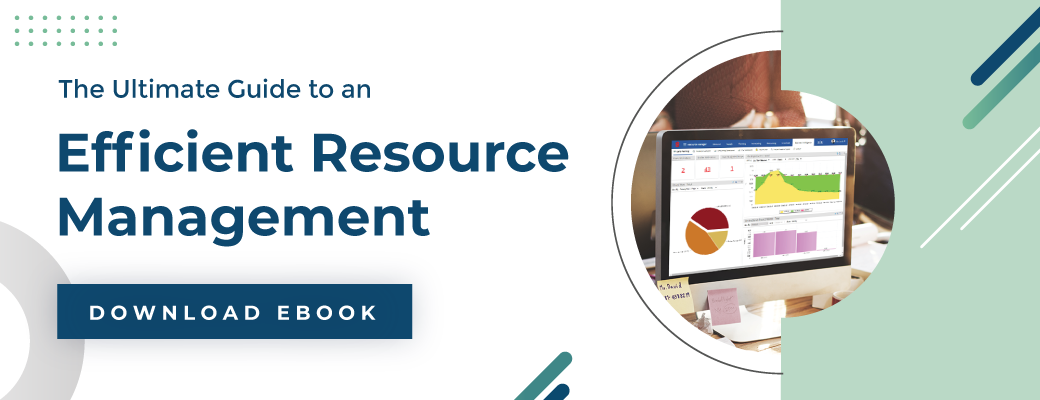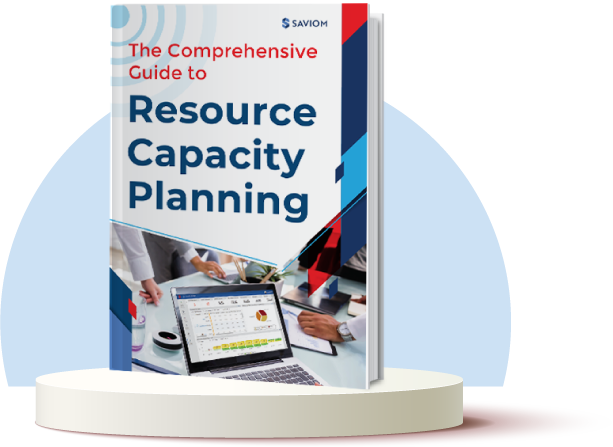Undertaking a construction project is a tough job. Besides internal factors such as process delays, construction projects must be prepared for external factors like weather constraints, price volatility, temporary contractors, etc. All of these can impact the project’s progress on different levels. Therefore, the onus is on the project manager to keep these limitations at bay and ensure successful project delivery
One must use the allocated project resources efficiently and effectively in such a situation. Therefore, the workforce’s talent and motivation will finally be the guiding factor for the successful delivery of any project. Thus, resource management plays a significant role in the construction industry. Simultaneously, rising insurance costs and the increasing difficulty of recruiting skilled labor have challenged construction project managers’ jobs.
This article aims to explain the challenges of construction resource management and provide a strategic approach to making it more efficient.
But before diving deep, let’s first understand the definition.
What is Resource Management in the Construction Industry & its Types?
Construction resource management is the process of planning, allocating, and managing resources, including personnel, equipment, materials, and finances, to complete construction projects successfully.
It helps to precisely accomplish every task and meet the project objectives within time. It also allows managers to deliver projects successfully by fulfilling project resource demands on time. There are two types of construction resource management, i.e., operational and strategic. Let’s explore this in detail.
Operational construction resource management
The operational construction resource management deals with the day-to-day aspects of resource allocation and utilization within AEC projects. It involves the planning, allocation, and monitoring of resources such as manpower, materials, equipment, and finances throughout the project lifecycle.
At an operational level, construction resource management involves four key steps:
- Forecasting AEC resource needs: Determining the types and quantities of resources such as labor, materials, and equipment required for construction projects
- Finding the right resources: Identifying the required skill sets and acquiring them from internal/external channels.
- Allocating resources: Assigning the right resources to the right projects at the right times to keep projects on track and within budget.
- Adjusting and keeping track: Changing resource plans if project scopes change, and continuously checking utilization levels of employees.
Strategic construction resource management
Strategic construction resource management involves meticulous, long-term planning and decision-making processes at a higher organizational level. This approach entails a comprehensive analysis of an AEC organization’s current capabilities, anticipated future needs, and external factors that may impact resource availability.
At a strategic level, construction resource management involves three vital steps:
- Capacity vs Demand Analysis: Supervisors conduct an analysis to compare the capacity of resources within the AEC firm against the demands of ongoing and potential future projects. This evaluation highlights excesses or shortages of resources, providing crucial insights for decision-makers regarding the firm’s ability to handle new projects effectively.
- Assessment of Future Skill Requirements: Supervisors evaluate forthcoming skill and role necessities specific to the construction industry. This assessment guides the AEC firm in planning training, development, and recruitment strategies to align with future resource needs effectively.
- Utilization of Modeling and Simulation Techniques: Supervisors employ modeling and simulation methods to create diverse project scenarios. By adjusting variables like resource availability and cost rates, they analyze the impact on project outcomes. This approach allows for a thorough examination of multiple project combinations, aiding in decision-making by identifying the most viable outcomes for resource allocation and project management.
Now, let’s delve deep into the essential construction project management resources.
Read More: Resource Management: A Comprehensive Handbook for Project Managers
Necessary Resources in the Construction Industry
The construction business has specific requirements and challenges similar to any other industry. Here is a rundown of all the essential types of resources in project management of the construction industry.
Human resources: They are the most critical part of the construction management resource pool. It is the people behind the project that make it a reality. The following are the vital roles required in the construction industry:
Estimator: The estimator is responsible for estimating the costs, materials, and labor needed to complete a project.
Architect: The architect’s job is to envision the client’s needs and develop a creative solution in a blueprint.
Supervisor: The supervisor is an intermediary between the field workers and the management office. They ensure effective communication between the two parties.
Quantity Surveyor: The quantity surveyor provides the client with advice on building costs and contractual matters throughout the building process and acts as a consultant to the architect.
Engineer: Engineers are vital on a job site and may specialize in building, electrical, mechanical, highway, etc. For example, civil engineers use computer software technology to create project plans. Electrical engineers monitor the power requirements in the project and ensure all hazards are negated.
Construction Worker: Construction workers are the driving force of every project. Once the project is planned, the workers get their hands dirty to make it a reality.
Equipment: Construction projects require heavy equipment. The equipment selection depends on the project’s time and cost. Some heavy equipment used in construction projects are bulldozers, excavators, cranes, trenchers, etc.
Materials: Materials such as wood, cement, metals, bricks, concrete, clay, etc., are the most common building material used in construction. Selection criteria such as cost-effectiveness and quality play a significant role.
Facilities: Facilities not only improve workers’ welfare but also enhance efficiency. As per the CDM regulations, all construction sites must include the following facilities:
- Living accommodations for the workers.
- Sanitary and toilet facilities.
- Drinking water facilities.
- Changing rooms and lockers.
- Canteen.
Now that we know the resources required in construction projects, let’s understand the benefits of effective construction resource management.
Benefits of an Effective Construction Resource Management
Construction resource management provides an array of benefits to construction project managers. Here is a list of some of them:
Gain visibility of all construction management resources
Often, you won’t have the required resources at the primary location. Hence, you may have to look at cost-effective resources from different areas within the business. But without enterprise-wide visibility finding the right resources with the desired skills and cost becomes challenging.
An efficient construction resource management software provides a centralized view of skills, qualifications, experience, cost rate, and other vital information. You do not need to reconcile multiple spreadsheets to identify and allocate appropriate construction resources for the project.
For example, if a manager needs a construction worker for a project, they can quickly see an available person’s schedule and identify the resource using advanced filtering capability. Then, the specified person can be assigned using a simple drag-and-drop facility.
Reduce construction project costs
Construction projects are subject to numerous constraints, such as resourcing costs, price volatility, the uncertain nature of the projects, and more. Due to these limitations, construction projects are vulnerable to budget and timeline overruns.
Construction resource management software monitors critical project financial indicators such as costs, revenue, profit margins, and overheads. Tracking project financials helps to avoid budget overruns. In addition, project managers can control costs by periodically tracking and comparing forecast vs. actual spending. If there is a variance, necessary corrective measures can mitigate project risks ahead of time.
It also helps monitor shared construction resources working on multiple projects. Accordingly, project managers can adjust the resource mix to control project resourcing costs in advance.
Read More: 5 ways to Reduce Project Management Costs
Improve productivity of construction resources
Construction resource management ensures that appropriate construction resources are deployed to suitable projects at the right time and cost. This approach maximizes workforce efficiency and improves productivity.
An effective equipment scheduling tool can help managers forecast the effective utilization of equipment and other resources ahead of time. Accordingly, they can mobilize resources from non-billable to billable and strategic work periodically and increase efficiency.
Efficient and high-level resource planning enhances the workforce’s productivity by scheduling them to billable work. For instance, a resource management solution helps allocate competent resources to tasks within seconds. Additionally, it allows the operations teams to reduce errors and perform tasks more inclined toward achieving the business goals.
Helps plan construction pipeline project activities
Lack of visibility of pipeline projects leads to scrambling for competent resources at the eleventh hour, resulting in unnecessary hiring/firing costs and compromised quality.
For example, a mall construction is scheduled to start 2-3 months down the line and needs a substantial number of resources. You suddenly realize that your project is not suitably staffed at the last minute, and you need to hire some additional ones to kickstart the project. Without sufficient lead time, you cannot onboard them immediately, causing further delays and budget overruns.
What could you have done to avoid this in the first place?
A robust construction resource management software can help avoid this last-minute scuffle and allow managers to create a skilled construction resource pool ahead of time. In addition, it provides intuitive forecasting that predicts future project demand well in advance.
Resource capacity planning enables managers to plan the future/pipeline construction project requirements and meet the deliverables. Moreover, it helps managers compare the resource capacity against the demand to identify excesses and shortfalls. Accordingly, managers can apply appropriate resourcing treatments such as training, adjusting project timelines, hiring, or selling excess capacity to bridge the gap.
Read More: 4 steps to perfect your Project Pipeline Management strategy
Facilitate construction team collaboration
Team coll aboration is necessary for everyone to know the project’s responsibilities. Since tasks are interdependent in a construction project, team members must always remain on the same page. For instance, an engineer must rely on the architect for the project design. Likewise, supervisors must constantly contact their workers and review their progress.
The project resource management processes enhance collaboration, supporting healthy relations between the whole team. Real-time collaboration streamlines effective communication between various construction project team members and ensures everyone is on the same page.
Moreover, problem-solving becomes easy with effective team collaboration. One gets a different perspective on the same issue making it easy to deduce a solution. It also fosters trust and enhances morale in the organization, building a positive environment and strengthening the team.
Read More: 11 Ways to Improve Cross-Departmental Collaboration
Forecasts resource-related risks in advance
AEC firms consistently face resource-related challenges like an aging workforce, skill obsolescence, burnout, unplanned attrition, etc. Thus, it is important to manage these risks effectively to ensure that the appropriate resources are available for the projects and that all the milestones are achieved successfully.
This can be done with robust construction resource management software as it will help managers forecast potential resource-related risks and implement corrective measures in advance.
For instance, when managers assign tasks to resources, the tool displays current and upcoming bookings for those resources. This feature enables managers to allocate employees appropriately. If managers exceed a resource’s capacity when booking work, the tool predicts suboptimal utilization of employees. Consequently, they can foresee the risk of overburdening, and burnout. This early insight allows for timely adjustments in workload distribution, preventing exhaustion and maintaining optimal resource well-being. Thus, the tool enables firms to predict future risks and keep a risk mitigation plan ready for seamless project initiation and completion.
Read More: How to Mitigate Resource Risk in Project Management?
Provides agility to reallocate resources as neccessary
Construction projects often encounter unforeseen obstacles such as unexpected client demands, material shortages, scope creep, etc. Hence, it is imperative to address this swiftly, because failure to do so can result in inefficiencies and disrupt the project’s workflow. For instance, imagine a scenario where the firm receives a new project demand as a priority.
However, as the organization has limited resources, workers from a lower-priority project must be promptly reassigned to meet the demand. If this reallocation process is not executed promptly, it can escalate costs, extend timelines, and put the high-priority project in jeopardy, resulting in a loss.
With construction resource management software, managers have the agility to reallocate resources in response to evolving project demands. This enables firms to seamlessly navigate the complexities of construction projects and ensure optimal outcomes.
Enhances decision making ability with real-time reports
In the AEC landscape, where new tasks arise regularly and multiple projects run concurrently, managers are required to make decisions accurately to prevent bottlenecks and ensure seamless project progression. This is especially true when allocating/scheduling resources, maintaining optimal workforce utilization, implementing health and safety protocols, etc.
Failure to act promptly in such scenarios can result in skill mismatch, sub-optimal resource utilization, and cost/schedule overruns, severe injuries among other things.
By leveraging BI-enabled construction resource management software, managers can gain data-driven insights into multiple resource metrics such as utilization, availability, capacity vs. demand, etc. With these actionable insights, they can make well-informed decisions and implement appropriate measures. This ensures successful project outcomes and gives AEC firms a competitive edge in an industry where efficiency, adaptability, and client satisfaction are paramount.
Read More: How Can You Make Data-Driven Decisions with Resource Management Software?
Now, let’s examine several challenges faced by the AEC firm and explore effective ways to combat them.
Challenges Associated with Construction Resource Management and How to Mitigate them
Numerous roadblocks in construction resource management can cause missed deadlines and cost overruns. Here are some challenges and ways how to manage construction projects effectively.
Inability to foresee future project demands
When supervisors lack insight into the opportunity pipeline, they may struggle to predict future project demand. This results in an inability to ascertain project requirements, including the types and quantity of resources needed, their skill sets, and competencies. Consequently, they are unable to initiate the project on time, potentially causing resource shortages.
Solution: Firms can implement a futuristic resource forecasting tool that will enables supervisors to conduct capacity planning in advance and determine the number of AEC resources required in each project phase. After that, they can identify resource shortages or excesses. This will give them enough lead time to take necessary measures and ensure they have the requisite talent pool, resulting in seamless project delivery.
For example-There was a sudden surge in the need for skilled electricians in the upcoming project phase. Identifying potential shortages in advance, supervisors proactively initiated cross-training sessions for existing staff and collaborated with external agencies for additional recruitment.
This preemptive approach ensured a sufficient talent pool for the electrical tasks, averting delays in the project timeline due to potential resource shortages. Consequently, the project progressed smoothly, meeting deadlines without interruptions in the delivery of essential electrical services or compromising quality due to unexpected resource constraints.
Shortage of skilled labor
Skilled labor plays a vital role in the success of every construction project. But, with the increasing demand for construction services, there is a shortage of skilled labor.
Numerous factors influence the shortage of skilled labor. Some of which are:
- Workers who lost their construction jobs moved to other industries.
- Professional construction resources are retiring.
- Construction businesses haven’t innovated their hiring process with technology.
A limited workforce creates additional strain for construction companies due to the vast project workload. As a result, the resources get overwhelmed with the projects, resulting in delays and poor outcomes.
Solution: To address the shortage of skilled labor, construction firms need to invest in all employees’ training, such as;
- Refresher training courses for all resources
- Mentorship programs, where seniors will guide new workers
Moreover, experimenting with new approaches while recruiting construction resources will mitigate the issue. Here are some of the additional ways that will help negate the shortage of skilled labor:
- Secure skilled workers beforehand
- Empower resources to select projects of their interest
- Hire part-time or contractual employees
- Offer loyalty points to your current workers
Read More: How to Reduce Absenteeism in the Workplace
Lack of resource planning and scheduling tools
To gain a competitive edge in this technologically advanced era, managers must have the right resourcing tools. Silos of spreadsheets or home-grown tools are limited to essential admin work. They fail to address construction resource management challenges efficiently. They are also time-consuming and error-prone, resulting in scheduling conflicts such as double bookings.
Solution: A resource planning tool can map out your resources’ skill sets and schedule tasks accordingly. Using the software, you can assign resources to tasks best suited to their unique skills. Then, you can forecast, schedule, and allocate tasks as required.
Resource scheduling software captures employees’ schedules and their time off, such as vacation, annual leave, or public holidays. It also provides visibility of other available resources when needed and keeps the project resource plan on track. Resource capacity planning helps to identify and bridge the capacity gap using appropriate measures.
Also, it would help if you had a backup plan in case someone gets unwell or has some personal emergency. A high-level resource planning strategy allows a buffer on resources during unforeseen events.
Read More: What is Resource Planning, and Why is it Important in Project Management?
Changes in project scope due to various external and internal factors
Scope creep can adversely impact resource productivity and increase workload. In addition, it leads to burnout and turnovers as resources get overwhelmed with last-minute changes.
Also, managers face a massive resource crunch and struggle to find suitable staff at the last moment.
Solution: First and foremost, you must ensure the scope is clear to everyone working on the project. The client should understand what is in the scope and what isn’t. Excellent and transparent communication with the client can negate last-minute hiccups.
Here is how you can save the project from scope creep:
- Determine and agree upon a change management process upfront.
- Prioritize the tasks and accommodate new requests if necessary.
- Communicate with clients and stakeholders about any scope creep.
- Analyze the impacts of changes and present solutions to your client or stakeholder to tackle them.
- Finally, if scope change is the only way possible, find ways to incorporate the changes.
Read More: Enterprise Risk Management Framework: 8 Core Components
Delays in the delivery of materials or equipment
The AEC industry constantly grapples with supply chain disruptions, unexpected demand fluctuations, logistical issues, etc. This can lead to delayed delivery of materials or equipment, impacting task dependencies, rendering workforce idle or in extreme cases, increasing their manual burden. It can also stretch project timelines and budgets.
Solution: By employing accurate resource forecasting tools, supervisors can anticipate the material and equipment requirements at different project phases. Then they can mitigate the impact of these delays by implementing measures to ensure that resources are available precisely when needed.
For example- In the construction of a commercial complex, a delay in steel beam deliveries due to supply chain disruptions halted critical structural work. Using resource forecasting tools, supervisors predicted the steel requirements for each construction phase. To mitigate potential delays, they established agreements with multiple suppliers and pre-ordered extra steel beams, ensuring buffer stock.
When the anticipated delay occurred, they seamlessly switched to alternative suppliers, preventing work stoppage. This proactive approach minimized idle labor and prevented extended project timelines and additional costs, showcasing the effectiveness of tool in averting material-related delays in construction projects.
Sub-optimal resource utilization
Resource utilization is one of the KPIs in construction project management. However, finding the resource utilization metrics right is tricky. Managers sometimes oversee utilization when resources are not working on any billable task. Overlooking utilization leads to disengagement, decreased morale of employees, and other consequences of sub-optimal resource utilization. In addition, resources become more prone to mistakes as they lack focus. Consequently, they fail to adhere to the company standards.
Solution: Knowing your team’s current resource utilization rate will tell you if your team is overwhelmed/underwhelmed with the workload. Reviewing the utilization rates will help you re-plan and reassign tasks if needed.
Both overutilization and underutilization can have adverse effects on the project. Here are some simple steps to improve resource utilization:
- Define appropriate variables to measure billable utilization.
- Improve your resource deployment upfront by comparing planned versus actual reports. It will also help you to prepare for future projects.
Proper resource planning and resource capacity planning ensure that no project vacancies go unfilled or excess capacity goes wasted. As a result, you can maximize your resource utilization and ensure timely delivery.
Poor communication
Poor communication is one of the factors that can hamper project success. The project manager has to foster team collaboration. Otherwise, communication challenges will grasp the construction project management.
Solution: A communication plan will make team collaboration much more effortless. There must be constant contact between the team members, managers, and stakeholders. Modern resource management solutions facilitate real-time collaboration using discussion boards or personalized chat rooms. Project members can effectively communicate, update, and share documents and more through personalized chat rooms. Project members can effectively communicate, update, and share documents and more.
Thus, implementing a single collaboration platform for the team and stakeholders will help build communication. It will help the team members to:
- Understand the goals of the project
- Access and use approved project documents
- Update their tasks when needed
- Track the overall progress of the project
- Log risks and issues
For example, instant desktop notifications, chatbots, task reminders, etc., enable faster communication. It will help the team stay connected and well-informed.
Since we now understand the challenges related to construction resource management, let’s learn the steps to evaluate the resource requirements.
Four Steps to Identify Resource Requirements for Construction Industry
There are four basic steps to arrive at resource requirements for the construction industry:
Create a project plan and identify milestones
A project plan ensures that everything remains on track and gives a clear view of the scope. Moreover, properly understanding project milestones and deadlines helps allocate effective resources in construction projects. With the help of a WBS, you can better understand what is required for the project’s success. It also works as a roadmap of tasks and elaborates the skill set requirement.
Identify resources required for project success
First, one needs to identify the specific work that needs to be done. Based on that, estimate the type and number of resources required at different stages. Next, plan for resource acquisition so that there is no idle time and enough work for the onboarded workforce. Plan for ramp-up and ramp-down activities as appropriate.
Evaluate resource availability and reusability for other projects
Ensure the availability and reusability of your project resources to meet project milestones. You must ascertain if a resource can be used for multiple tasks on the same project or if they would be better suited for another project based on the skills.
Read More: Understanding Resource Availability within Project Management
Have an authorization process for proper resource planning
A consistent authorization process will help the managers and the stakeholders ensure everyone is aligned with the objectives. This way, you can stick to the milestones and deliver within the deadline.
These steps help construction firms assess the resource requirements for projects. Now let’s understand some strategies to ensure
Best Practices for Effective Construction Resource Management
In the AEC business landscape, managers often manage multiple projects amidst tight timelines and budget constraints. This is when effective management of resources becomes critical for success. Here are the following best practices firms can adopt to manage resources efficiently.
Forecast future AEC project resource requirements
Given the the complex nature of AEC projects, firms need to plan ahead of the curve to ensure they have the right resources available before project’s onset. For this, managers have to anticipate the future project demand and identify the skills within their talent pool. In case of discrepancies, firms can implement necessary remedial measures proactively, and ensure seamless project delivery.
For instance, in case of an excess of construction resources, supervisors can bring forward project timelines or sell additional capacity. Alternatively, a resource shortfall can be mitigated by bringing in previously idle workers, implementing training and upskilling programs, conducting planned hiring, etc. This helps to address skill shortages and eliminates last-minute hiring hassles.
Allocate competent workforce to suitable AEC projects
To ensure successful project execution and delivery, supervisors must deploy AEC resources to suitable tasks based on their experiences, skills, competencies, etc. For instance, the project requires skilled carpenters to complete the intricate woodwork in the interior spaces.
With complete visibility into the resource-related information, supervisors can quickly narrow their search and choose the right workers for the project, thereby ensuring competent allocation. This ensures the projects are completed within the stipulated timeline and budget, improving client relations.
Manage ramp-up & ramp-down of AEC projects effectively
In the dynamic AEC landscape, projects consistently experience a surge and decline in workforce demand. For instance, during the execution phase, supervisors may mobilize a substantial workforce to meet the project’s requirements. However, as the project nears its closure, several engineers are released from their tasks at once, and they end up on the bench.
This leaves a significant part of the resource pool without work, adversely affecting the firm’s profitability. However, by gaining foresight into projects, supervisors can allocate suitable work to resources before they hit the bench. Moreover, they can provide partially skilled AEC employees shadowing and on-the-job training opportunities, thus ensuring continuous productivity and billability of the AEC employees.
Read More: How to Balance Ramp-Ups and Ramp-Downs in a Project?
Monitor & optimize utilization levels of construction resources
When supervisors fail to monitor the workforce’s utilization levels consistently, it can result in several challenges. For instance, when construction workers are underutilized, it can cause disengagement, lower their morale, etc. On the other hand, overutilization of AEC workforce can increase stress, burnout, unplanned attrition, lower productivity, etc. Therefore, to ensure optimal utilization of resources, it is imperative for AEC firms to regularly track and monitor the utilization levels of the workforce.
For this, managers can leverage real-time utilization reports and color-coded heatmaps, to identify instances of under or overutilization. In the case of resource underutilization, supervisors can allocate work to the resources. On the contrary, the overutilization of resources can be mitigated by leveraging optimization techniques such as resource leveling and smoothing. This helps maintain the resource health index, improve productivity, and ensure timely project delivery.
Create Individual Development Plans(IDPs) as per requirement
Every professional within the AEC industry harbors distinct career aspirations. If the firm fails to address these individual goals, it may reduce their motivation and commitment to the company. Further, this can lead to prolonged, unplanned absenteeism, skill shortages, etc., impacting project timelines and overall productivity. Therefore, it is imperative for AEC firms to develop personalized Individual Development Plans (IDPs) for each employee.
By carefully considering the employees’ skills, competencies, proficiency levels, etc., supervisors can offer IDPs that align with their career objectives and the firm’s strategic vision. Consequently, this helps ensure the workforce is well-prepared to meet the constantly evolving demands and increases job satisfaction and retention. Moreover, it fosters a positive company culture and solidifies the firm’s reputation as an industry leader committed to the growth and success of its professionals.
Read More: How Can Retraining/Upskilling Future-Proof Your Workforce?
Now, let’s learn some of the key trends shaping the future of construction resource management.
Future trends in construction resource management
As the construction industry is constantly evolving, leveraging technology and other trends has helped them to make construction management and site operations efficient and sustainable. Here are some of the emerging trends in construction resource management.
Increased adoption of technology
Technology plays an integral part in the construction industry for planning, designing, automating manual tasks, increasing the productivity of resources, etc. Tools like Building Information Modelling (BIM), Construction Robotics, AI, IoT, BI, etc., help optimize resource allocation, improve communication, and reduce waste.
Use of advanced building materials
There is a paradigm shift in the construction industry from using traditional materials to modular and green approaches. There is a growing emphasis on using sustainable materials and processes like 3D printed concrete and basalt, mycelium composites, bioplastics, and bio-foam.
Growing prominence for modular construction
Off-site, prefabricated or modular construction is one of the popular trends in this industry. This involves the developing of the standardized components of a structure in the off-site factories and assembling the final ones on-site. Modular construction is a cost-effective method that minimizes construction time, improves the quality, reduces material wastage, etc.
Emphasis on sustainable practices
Sustainable construction methods are gaining prominence in building projects as they positively impact the environment and the society. Some of the sustainable practices include the Building Information Modeling (BIM), use of recycled materials, green insulation, solar power, cool roofs, etc.
Better workers’ safety measures
Construction workers are exposed to several hazardous equipments and activities, which puts their safety at risk. Hence, modern construction companies are investing in immersive technologies like Personal Protective Equipment (PPE) and AI algorithms to anticipate the risks and take corrective measures.
These are some of the emerging trends in construction resource management that will help firms improve the construction processes’ efficiency.
Conclusion
Construction resource management can be tricky. However, with proper resource planning and scheduling, managers can maximize productivity and ensure minimal resource conflicts. Resource management software is critical to delivering construction projects successfully within the stipulated time, and budget is key to delivering construction projects successfully within the stipulated time and budget.
So, how do you manage resources effectively and efficiently?
The Glossary
Read More: Glossary of Resource Workforce Planning, Scheduling and Management
SAVIOM Solution
SAVIOM has over 20 years of experience helping multinational clients manage their resources effectively and efficiently. With over 20 years of experience, this Australian-based MNC has a global presence across 50 countries and has helped 100+ clients meet their specific business goals. Saviom also provides tools for project portfolio management, professional service automation, and workforce planning software. So, SAVIOM can help your business to establish an efficient system geared toward your specific business challenges.












Leave a Reply